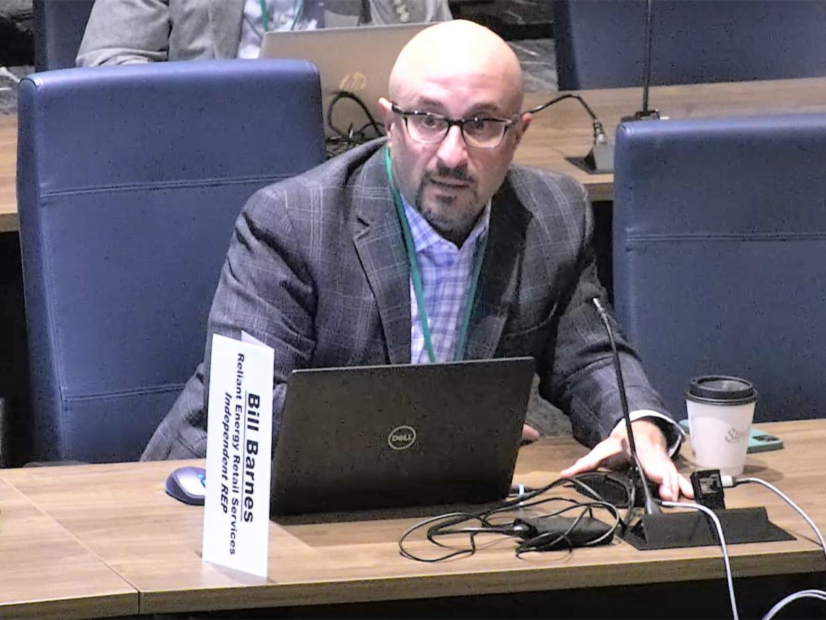
ERCOT stakeholders on Friday coalesced around changes to the operating reserve demand curve (ORDC) as their preference to supplement staff’s proposed bridge mechanism to the new performance credit mechanism (PCM).
During a workshop with staff, the Technical Advisory Committee (TAC) agreed to pursue changes to the ORDC and procuring additional ancillary services as two concepts that could help retain existing assets and build new dispatchable generation until the PCM can be fully implemented — assuming the PCM passes muster with Texas lawmakers.
Committee members quickly eliminated options that included capacity contracts, a manually settled PCM, and a backstop reliability service suggested by Texas regulators that would set aside capacity for dispatch during scarcity conditions.
“These are largely alternative ideas or alternative information that we want to provide to the [ERCOT] board … we’re trying to get to a point where we’re providing incentives for people to come into the market to provide dispatchable generation,” TAC Chair Clif Lange said, referencing legislators’ requests for more thermal generation in the ERCOT market. “I’m looking at it in the context of [2021 legislation in] which the intent was to try to provide additional revenues to dispatchable generation to come into the market.”
ERCOT’s ORDC values the wholesale market’s operating reserves on their scarcity, reflecting that value in energy prices. The curve has been modified several times since it became part of the market in 2014. The value of lost load, which is set equal to the system-wide offer cap, was changed from $9,000/MWh down to the $2,000/MWh low-system-wide offer cap after the 2021 winter storm, then back up to $5,000/MWh in January 2022. The minimum contingency level was also increased in 2022 from 2,000 MW to 3,000 MW.
The ISO’s staff also has proposed changes to the demand curve by targeting increases in operating reserve ranges that are above emergency levels, while avoiding ORDC increases at times of substantial operating reserve surpluses.
As directed by the Public Utility Commission, staff’s goal is improving market signals so they help retain existing assets, add new dispatchable generation, and reduce reliability unit commitments (RUCs) for system capacity. That would fit within the PUC’s requirement that bridging options make minimal system changes and be implemented with a year, fit within the existing market framework, and continue to be hedged by market participants through their energy positions.
Kenan Ögelman, vice president of commercial operations, said staff studied adding multistep floors within the same range of operating reserves, as suggested by stakeholders. Analyzing 2020, a mild-pricing year, and 2022, a higher pricing year, they found that setting floors of 6,500 MW at $20/MWh and 7,000 MW at $10/MWh would have increased revenues by about $500 million. That would align with the additional average revenue the PCM would provide, Ögelman told TAC.
He said the back-cast analysis for 2022 confirms that the multistep floors would direct the revenues largely to dispatchable resources. Setting a floor that first kicks in at the 6,500-7,000 MW range provides a self-commitment incentive better aligned with ERCOT’s conservative operations posture, he said.
“The last ORDC change made no distinction between online and offline reserves,” Ögelman said. “This is focused on online [reserves] and at the kind of scarcity bandwidth where we tend to take RUC actions. The difference really is the focus on online resources only getting the reward. So, if it brings more resources online … that would reduce the need for us to RUC.”
Stakeholders are still considering the additional procurement of ancillary services as an option, though it has received less support than ORDC changes. Dave Maggio, ERCOT’s director of market design and analytics, said increasing ancillary services is not one of staff’s “preferred approaches.”
“It’s much less clear to us how that helps to bridge the gap and … meet some of the criteria that we’ve listed. I don’t think it has any of the same benefits that we’ve been talking about,” he said. “It’s also not as clear … that we would have this … same targeted change in revenues as we were seeing with [our recommendation]. It doesn’t seem to do any of those as well as the preferred solution.”
Staff and stakeholders will share their recommendations with the board’s Reliability and Markets Committee as part of the directors’ April 17-18 meeting. TAC will meet virtually April 10 to agree on its final pitch to the board and, as Reliant Energy’s Bill Barnes suggested, to prevent a TAC meeting from breaking out during the R&M meeting.
“There are a lot of good thoughts behind some of these other options and concerns that I think would be valuable for the R&M to hear,” he said.
The PUC in January recommended to the state legislature that ERCOT adopt the PCM as a reliability addition to its energy-only market to address resource adequacy and operational flexibility challenges. The PCM would issue incentive payments to dispatchable — and primarily thermal — generation that meets performance criteria during the tightest grid periods.
The legislature has pushed back on the PCM and filed a package of bills that includes building 10 GW of gas-fired generation to sit on the sidelines until load shed is imminent. (See Texas Senate Lays out Changes to ERCOT Market.)
Members Honor Walter Reid
Stakeholders and staff paused the workshop to share their memories of the Advanced Power Alliance’s Walter Reid, who died March 24.
 Walter Reid | Advanced Power Alliance
Walter Reid | Advanced Power AllianceA technical and regulatory consultant for APA after a career with the Lower Colorado River Authority, Reid and his booming voice helped set the tone for ERCOT’s stakeholder process.
“Walter has his handprints all over [the stakeholder process] and was an amazing leader in getting us where we are today,” Ögelman said. “He coached me, and he always listened to what I had to say, so I truly appreciate having him in my life and getting to work with him.”
Barnes noted stakeholders don’t have a textbook to guide their work. Instead, they rely on those who have come before to share their knowledge.
“That’s how we grow. That’s how we improve on this market design, and Walter was always generous with his knowledge,” Barnes said. “I think back to the 2008 days when there were a lot of technical issues regarding the integration of wind. He was the leader in getting those changes adopted and was hugely successful in the amount of wind production that has been developed in the state and allowing ERCOT to operate it reliably. We owe it to folks like Walter for the success that we have today.”
“Texas and ERCOT are better places and better markets thanks to his efforts. Renewable energy owes much of its success in this state to the work of Walter Reid,” the APA said on its website.
Credit Group Members Approved
The TAC also confirmed 11 members for its new Credit Finance Sub Group (CFSG), which has been tasked to help ensure that procedures are in place to mitigate credit risk fairly for all market participants.
With the group’s first members confirmed, it can now vote on its leadership. Austin Energy’s Brenden Sager and Reliant Energy’s Loretto Martin are running unopposed for the group’s chair and vice chair positions.
The CFSG, which is still accepting membership applications, is scheduled to hold its first meeting April 21.
The TAC approved the group’s charter during its March meeting. The CFSG replaces the Credit Working Group (CWG), which had reported to the ERCOT board’s Finance and Audit Committee since 2004. TAC agreed to take on credit oversight responsibilities and consolidated the CWG with its Wholesale Market Subcommittee’s Market Credit Working Group and disband the latter. (See “TAC Shares Changes with R&M,” ERCOT Board of Directors Briefs: Oct. 18, 2022.)



